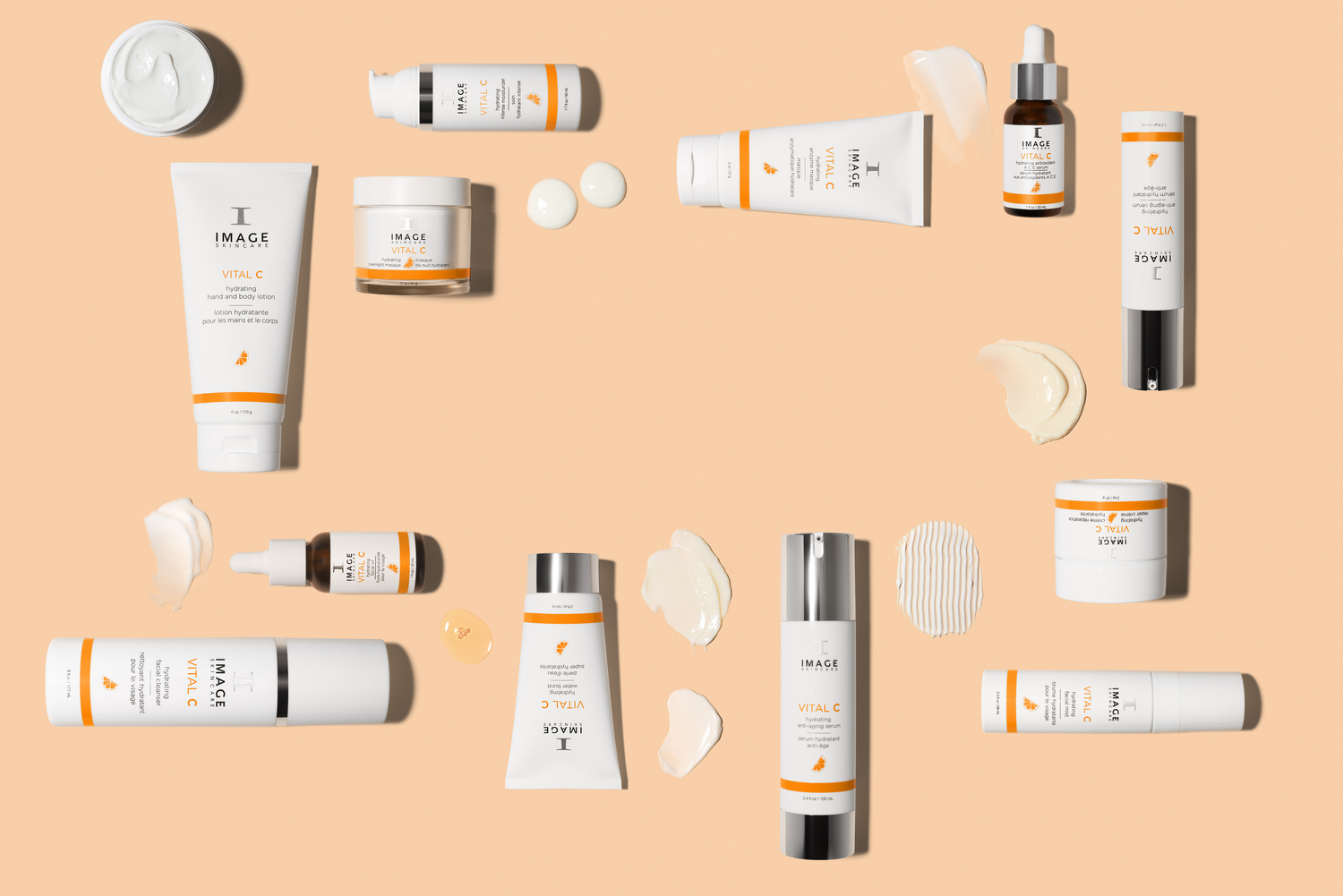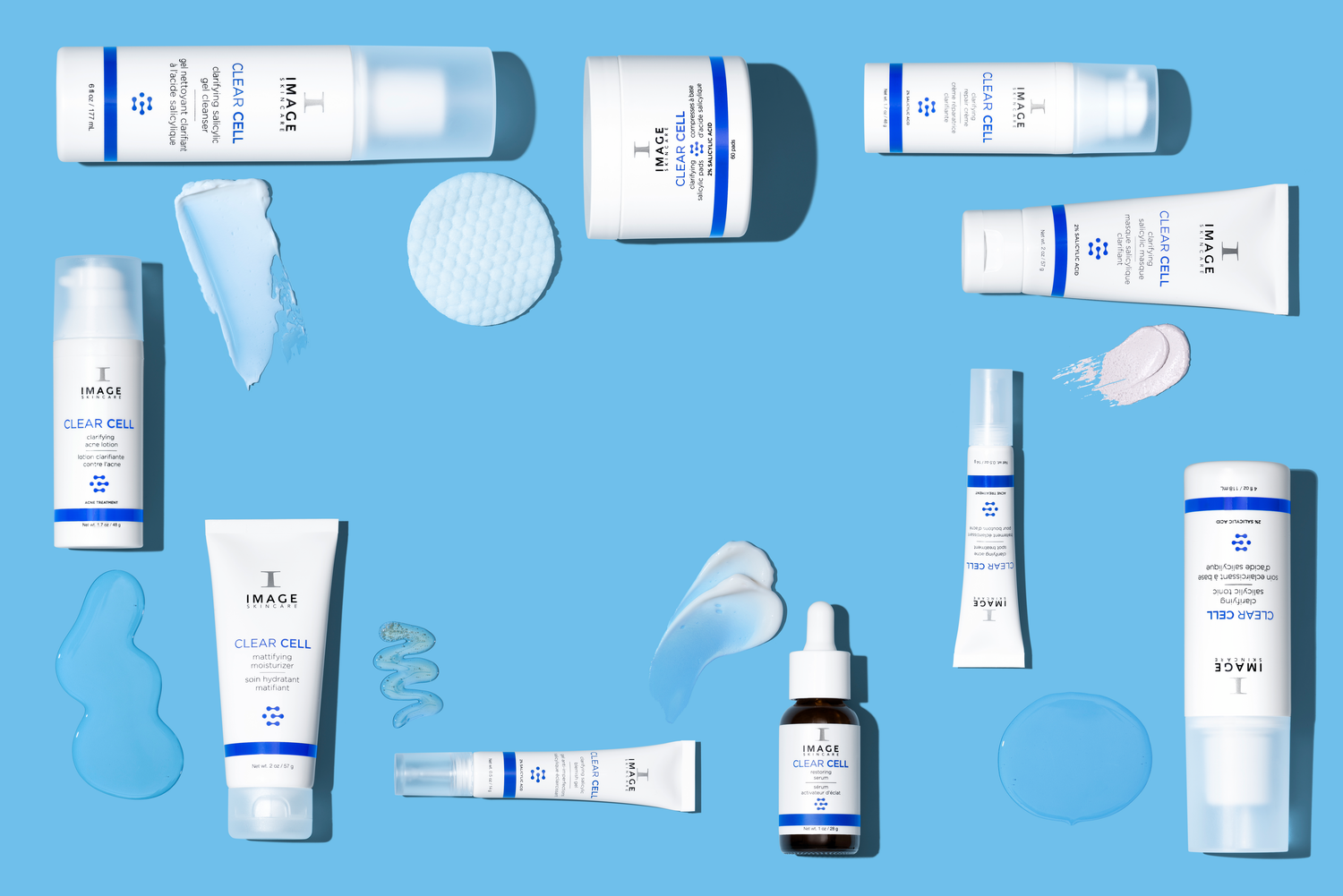
Skin Care
Our skincare program combines expert training with the power of our medical-grade Image Skincare line to deliver real, lasting results. Our estheticians take the time to understand your unique skin, tailoring each treatment to meet its specific needs. With us, you'll experience a personalized skincare routine designed just for you—no guesswork, just effective, noticeable results.
Consults

Classic Skincare
Skin Lab Treatments

Packages
Image Skincare
FAQs
-
it sounds scary, but it’s one of the most non-invasive + gentle professional skin care treatments you can get! with very little downtime relative to other procedures like micro-needling, chemical peels can even help rejuvenate sensitive skin. in essence, a chemical peel is an acid or enzyme (or a mixture of them) that exfoliates your skin, removing dead surface skin cells, clearing out pores, and stimulating healthy cells to surface. the most common acids used are glycolic, tca, and salicylic acid. some chemical peels, like those offered by image professionals, will also include other beneficial ingredients like peptides and retinol.
the results you can expect from a (acne) chemical peel: you can see both immediate and long-term results. as soon as the acid used in a chemical peel comes in contact with your skin, it begins to help shed dead surface skin cells and encourages newer cells to rise to the surface. skin is almost immediately given a more radiant and luminous appearance. within 3 to 5 days, you can expect “epidermal regeneration” with a superficial peel.
-
facials remove dead skin + toxins caused by pollution, grease, + dirt found in your everyday environment, increase collagen, increase cell growth development, + cleanse the surface of the skin.
facials also help to improve + restore circulation to the skin, increasing the flow of oxygen-enriched blood to skin cells, this rush of blood to the skin gives your skin a healthy glow + plumps skin cells with vital nutrients + water, which reduces the appearance of wrinkled/dry skin.
if you aren’t someone who wants to invest in a routine with professional facials, we do recommend an occasional treatment-based facial to give your skin a breath of fresh air (literally).
-
The frequency of facials depends on individual skin type, concerns, and goals. Generally, it's recommended to get a facial every 4 to 6 weeks. This aligns with the skin’s natural regeneration cycle and allows for consistent care and improvement.
-
To prepare for a facial, it’s advised to avoid heavy exfoliation or the use of strong skincare products (like retinoids) for a few days prior.
Arrive with a clean face, and avoid makeup if possible.
Additionally, it’s helpful to inform your esthetician about any skin conditions, allergies, or recent treatments to ensure the facial is tailored to your needs.
Dermaplaning
-
Dermaplaning is a process that removes the top layer of the skin to improve the absorption of topical products, reduce the visibility of fine lines and wrinkles, prep the skin for chemical peels, target deep acne scars, and achieve healthier, more radiant skin. During the process, a sterilized surgical scalpel is used to gently shave or scrub the skin's surface, eliminating dead skin cells and fine vellus hair. This technique stimulates cell regeneration, enhancing the overall appearance of the skin.
-
No, dermaplaning does not affect hair growth. The vellus hair will grow back at the normal rate and texture.
-
Please note you cannot have dermaplaning done if you:
Are currently taking Accutane or have taken it within the last year
Use topical agents such as glycolic acids, alpha-hydroxy acids, or Retin-A within the last 7 days
Are currently experiencing active acne, inflammatory lesions, herpes simplex/labialis, moles, or warts in the targeted area
Have a history of herpes simplex infections if the perioral area is being treated
Are taking steroids or have used them in the past month
Have had a chemical peel within the last 14 days
Have had Botox within the last 2 weeks before the appointment date
Are pregnant
Experience moderate-to-severe chronic skin diseases such as eczema, dermatitis, psoriasis, or other skin rashes
Are experiencing any type of cancer
Have extreme keloidal tendencies
Are immunosuppressed
Are currently on chemotherapy or radiation
Have a history of keloid formation or hypertrophic scarring
Experience pigmentation problems from acne
Have hemophilia or scleroderma
Are taking hormonal therapy that produces thick pigmentation
Are taking oral blood thinner medications
Experience rosacea
Currently have skin cancer or a sunburn
Have microblading, tattoos, telangiectasia/erythema, or vascular lesions in the treatment area
Have super thick or dark hair (blades are not made for beard-type hair)
Have diabetes that is not well-managed
-
To ensure optimal results and protect your skin after a dermaplaning treatment, follow these guidelines:
Sun Protection: Completely avoid direct sunlight and strong UV light exposure, including tanning beds, immediately following the treatment. Apply SPF 30+ daily to the treated area for at least two weeks to protect the skin and prevent discoloration.
Gentle Cleansing: Cleanse the treated area twice daily using a gentle, post-treatment cleanser. Follow with a hydrating serum or treatment cream suitable for your skin type.
Daily Sunscreen Application: Ensure daily application of SPF 30+ sunscreen to shield your skin from UV damage and maintain the results of your treatment.
Avoid Intense Activities: Refrain from aerobic exercise or vigorous physical activities until any redness has subsided to avoid additional irritation.
-
Depending on the type of dermaplaning facial you choose with us, it will last from 60 to 90 minutes.
-
Dermaplaning can improve skin texture, remove dead skin cells, enhance the effectiveness of skincare products, and create a smoother surface for makeup application.
Potential side effects include slight redness, minor breakouts, and very rarely, scarring or infections. These are typically mild and resolve quickly.
Individuals with active acne, inflammatory skin conditions, or certain medical conditions (e.g., recent use of Accutane) should consult with a dermatologist before undergoing dermaplaning.
Microneedling
-
Microneedling is a cosmetic procedure that involves using a device with fine needles to create tiny punctures (micro-injuries) in the skin. These micro-injuries stimulate the body’s natural healing process, leading to increased collagen and elastin production, which improves skin texture, reduces the appearance of scars, fine lines, and wrinkles, and enhances overall skin tone.
-
Some of the biggest reasons people get microneedling done include:
Acne Scarring – One of the most common reasons people seek microneedling is to improve the appearance of acne scars. The tiny needles stimulate collagen production, which can help reduce the visibility of scars by promoting smoother, more even skin.
Fine Lines and Wrinkles – Microneedling encourages collagen and elastin production, helping to reduce the appearance of fine lines and wrinkles. It's often used for areas like the forehead, crow's feet, and around the mouth.
Skin Texture and Tone – It can improve the overall texture of the skin, making it smoother and more even. Microneedling can also help with issues like rough patches, enlarged pores, and skin dullness.
Hyperpigmentation – Microneedling can reduce dark spots, sun spots, and other forms of hyperpigmentation by triggering the skin’s healing process, helping to fade discoloration.
Stretch Marks – Some people use microneedling to reduce the appearance of stretch marks on the body, as the process helps to regenerate the skin's surface and improve its elasticity.
Hair Loss (Scalp Microneedling) – When done on the scalp, microneedling can promote hair regrowth by improving circulation and stimulating hair follicles.
Improved Absorption of Skincare Products – Microneedling creates micro-channels in the skin, which allows for better absorption of skincare products, enhancing their effectiveness.
Sun Damage – For those who have suffered from sun damage (like uneven pigmentation or a leathery texture), microneedling can help rejuvenate the skin and improve its overall appearance.
-
Microneedling is generally well-tolerated. Before the procedure, a topical numbing cream is applied to minimize discomfort. You may feel slight tingling or discomfort during the treatment, but it should not be excessively painful.
-
After microneedling, you might experience redness, swelling, and a sensation similar to mild sunburn for a few days. These effects typically subside within 3-5 days. Your skin may also peel slightly as it heals.
-
The number of sessions required depends on your skin’s condition and your aesthetic goals. Generally, 3-6 sessions spaced 4-6 weeks apart are recommended for the best results. Your esthetician will provide a personalized treatment plan based on your needs.
Initial improvements can be noticed within a few weeks, but the full benefits of microneedling typically become visible after 3-6 months as collagen production continues to enhance skin texture and appearance.
-
Arrive with skin clean of all makeup and skincare.
Avoid Retinoids/Retinol: Stop using retinol or any products with strong active ingredients (like AHAs, BHAs, or Vitamin C) at least 3-5 days before your appointment to avoid skin irritation.
Stop Using Exfoliating Products: Avoid harsh scrubs or exfoliating treatments 5-7 days before your appointment.
No Waxing/Threading: Avoid waxing or threading in the area being treated for at least 7 days before your appointment.
-
Microneedling is generally safe with minimal risks. Possible side effects include temporary redness, swelling, and minor discomfort. Rarely, there may be bruising or infection. Following aftercare instructions can help minimize risks.
-
Avoid Touching: Do not touch, scratch, or pick at the treated area to prevent irritation or infection.
Sun Protection:
7 Days Post-Treatment: Avoid sun exposure, UV light, and tanning beds.
After 24 Hours: Apply broad-spectrum sunscreen with at least SPF 30 daily to protect your skin.
Cleansing: Cleanse the treated area twice daily with a mild, non-exfoliating cleanser. Avoid active ingredients like glycolic acid or salicylic acid until fully healed.
Moisturizing: Apply a gentle, hydrating moisturizer to support healing.
Avoid Physical Activities: For 48 Hours avoid aerobic exercise, saunas, and hot baths to minimize sweating and irritation.
Makeup: Refrain from using makeup for at least 24 to 48 hours to reduce infection risk and let the skin breathe.
Skip Exfoliation: Skip exfoliating products and treatments (like scrubs or chemical peels) for at least one week.
Hydration: Drink plenty of water to support skin healing.
Monitor Your Skin: Watch for signs of infection, excessive redness, or prolonged discomfort. Contact your provider if you notice unusual symptoms.
Follow Additional Instructions: Adhere to any specific aftercare advice provided by your esthetician or healthcare provider tailored to your treatment and skin type.






